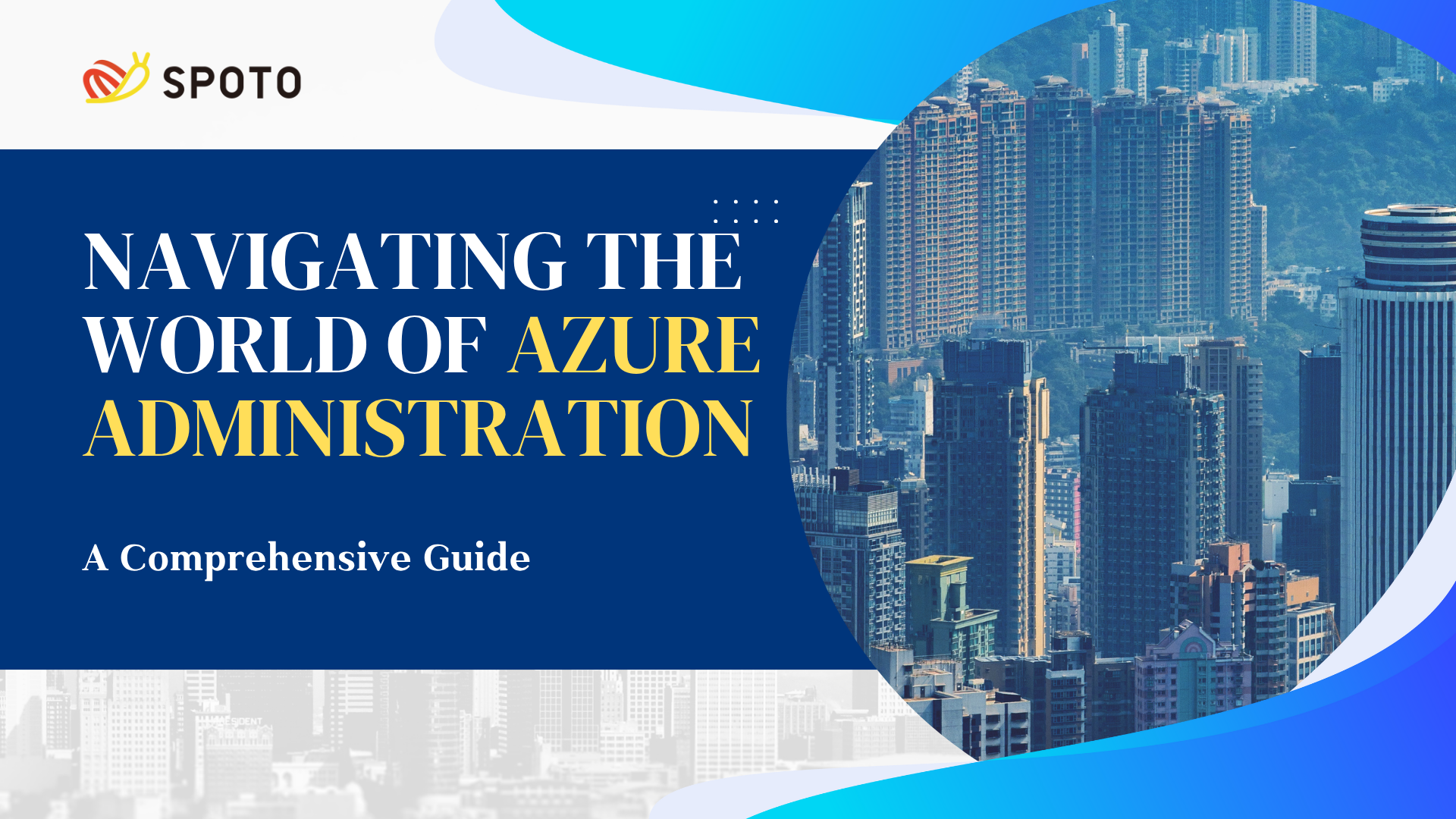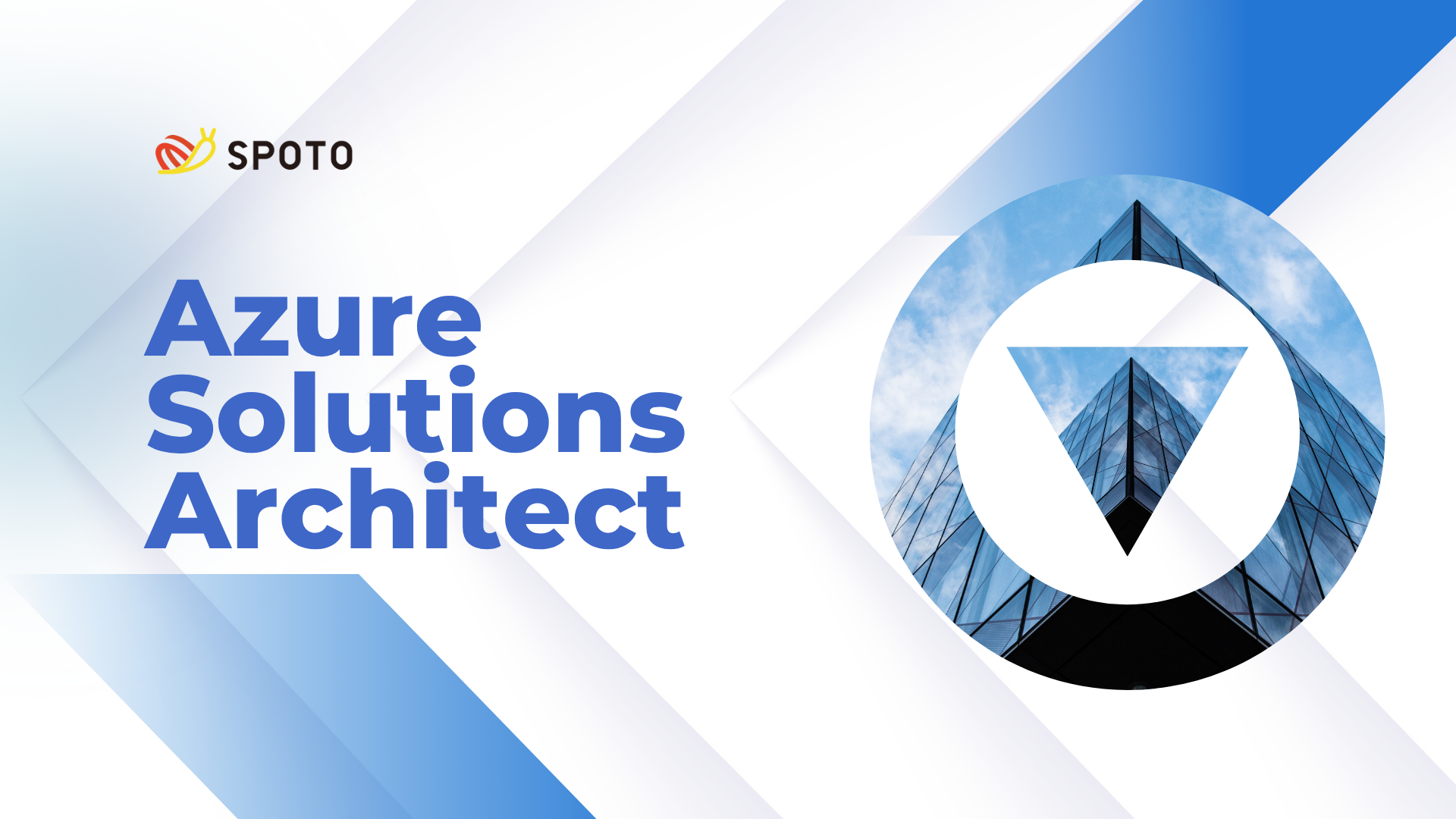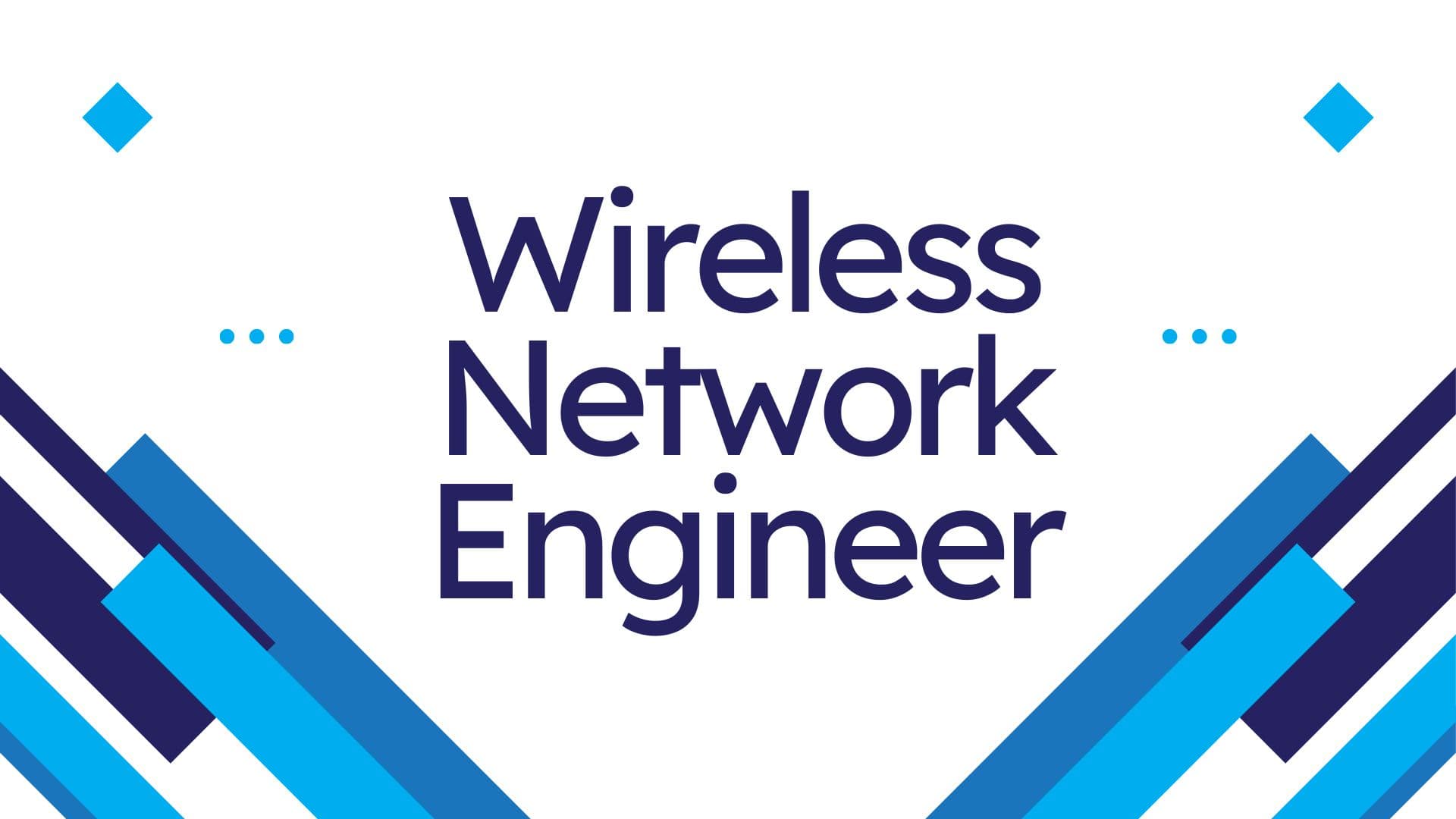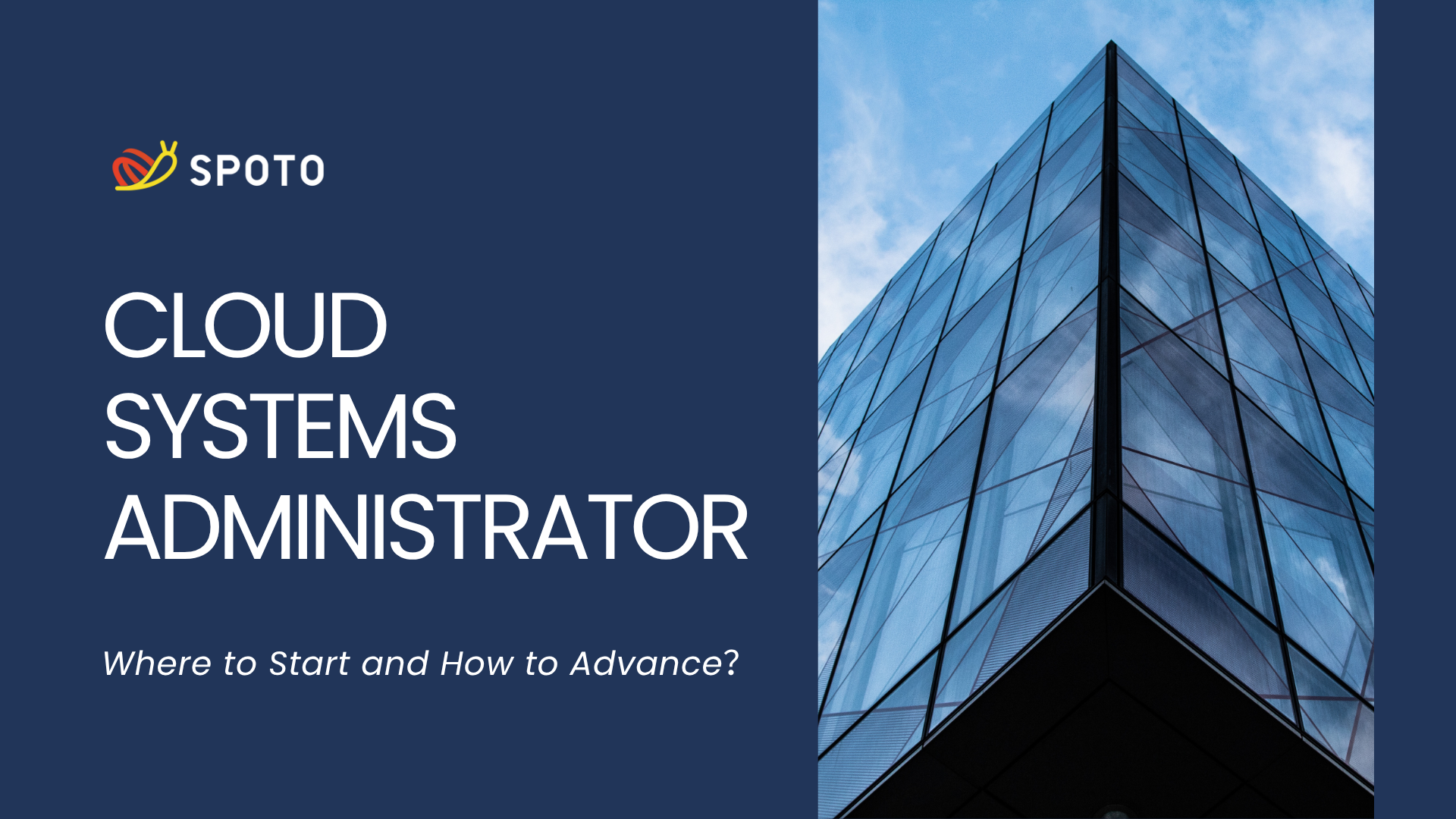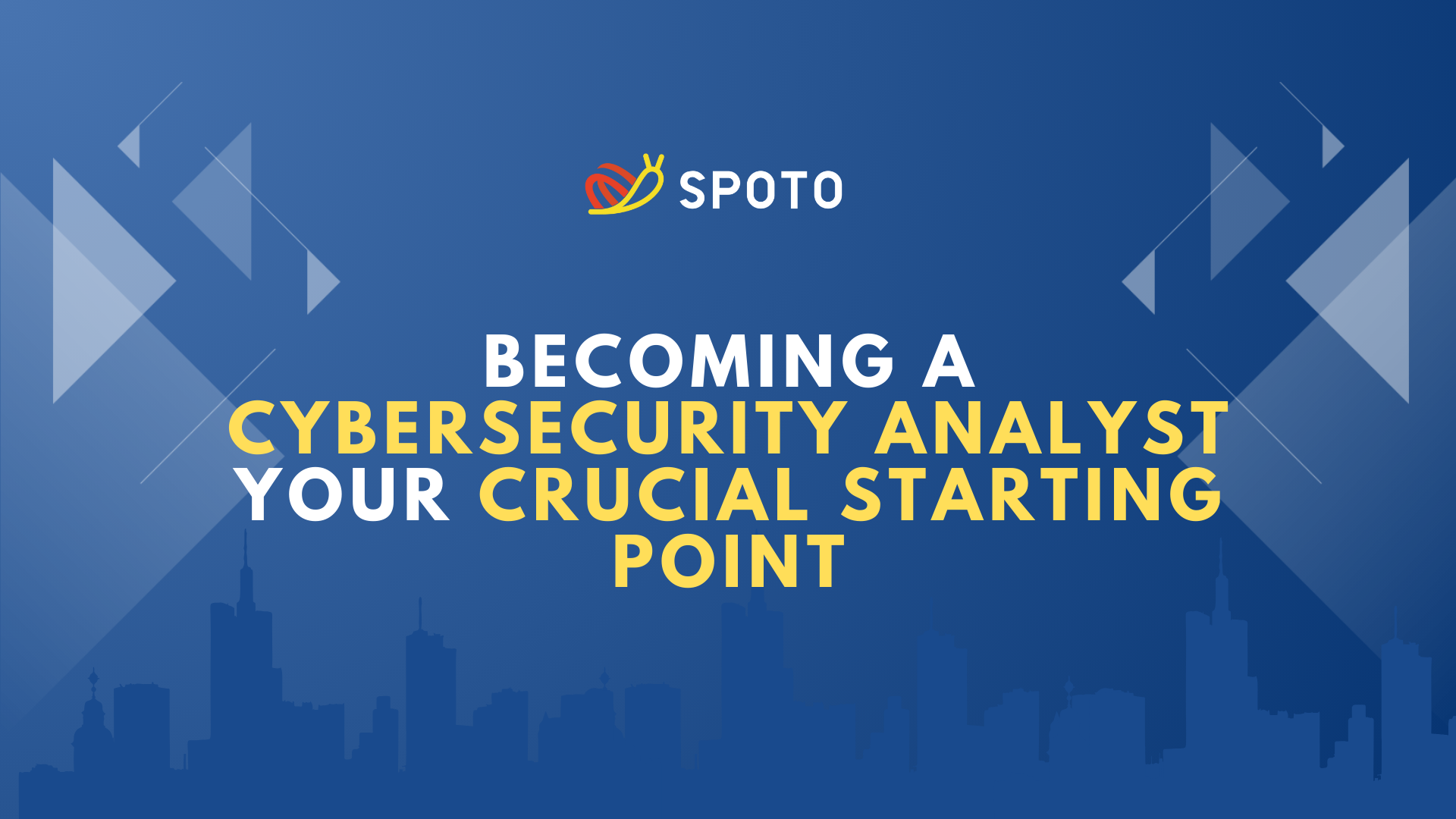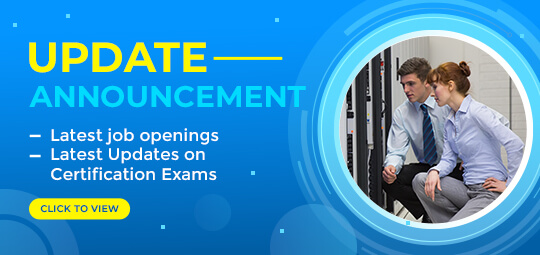TRUSTED BY THE SMARTEST TEAMS IN THE WORLD FOR CERTIFIED CANDIDATES
SPOTO Blogs
Useful learning materials to become certified IT personnel
-
- 1075
- Emma
- 2025-05-14 16:47
-
- 1164
- Emma
- 2025-05-14 15:42
-
- 1105
- SPOTO
- 2025-05-14 11:15
-
- 999
- SPOTO
- 2025-05-14 10:44
-
- 766
- Emma
- 2025-05-13 16:23
-
- 1384
- Emma
- 2025-05-13 15:31
-
- 1050
- SPOTO
- 2025-05-13 11:05
-
- 1101
- SPOTO
- 2025-05-13 10:38
-
- 1011
- Emma
- 2025-05-12 16:44
TRUSTED BY THE SMARTEST TEAMS IN THE WORLD FOR CERTIFIED CANDIDATES
SPOTO Blogs
Useful learning materials to become certified IT personnel
-
- 1075
- Emma
- 2025-05-14 16:47
Table of Contents1. An Overview of The Microsoft Azure Administrator2. The day-to-day Responsibilities of An Microsoft Azure Administrator3. The Details4. How Can You Become a Microsoft Azure Administrator? In the dynamic realm of cloud computing, Microsoft Azure has emerged as a dominant force, and Azure administrators are the unsung heroes ensuring its smooth operation. This blog will take you on a journey through the world of Microsoft Azure Administration, covering everything from the basics to the path of career advancement. 1. An Overview of The Microsoft Azure Administrator A Microsoft Azure Administrator is a professional who manages and maintains an organization's Azure cloud environment. They are the guardians of the digital infrastructure, responsible for keeping systems running efficiently, securely, and in line with business requirements. Azure administrators are well-versed in the vast array of Azure services, which range from computing and storage to networking and identity management. 2. The day-to-day Responsibilities of An Microsoft Azure Administrator The daily tasks of an Azure Administrator are diverse and crucial for the organization's digital operations. Provisioning and Configuration One of the primary responsibilities is setting up new Azure resources. This involves creating virtual machines, configuring storage accounts, and setting up virtual networks. For example, when a company needs to launch a new application, the Azure Administrator will provision the necessary computing power, storage space, and network connectivity on the Azure platform. Monitoring and Maintenance Azure administrators use monitoring tools like Azure Monitor to keep a close eye on the performance of the cloud environment. If any issues arise, they take immediate action to resolve them, whether it's scaling resources up or down, applying software patches, or troubleshooting network problems. Security Management Security is a top priority. Azure administrators implement security measures such as access controls and threat detection. They ensure that only authorized users can access sensitive data and resources in the Azure environment. Cost Optimization With cloud computing, costs can quickly add up. Azure administrators are responsible for optimizing costs by analyzing resource usage patterns. They may recommend switching to more cost-effective service tiers, decommissioning unused resources, or implementing auto-scaling features to ensure that the organization only pays for what it needs. 3. The Details Microsoft Azure Administrator Salary Range In the United States, according to Glassdoor, the average annual salary for an Azure Administrator is around $105,000. In high-cost-of-living areas or for those with extensive experience and additional certifications, this figure can be significantly higher. Prospects for Career Advancement and the Paths Leading to Senior Roles: AZ-305: This certification opens the door to a more strategic role. Azure Solutions Architects design end-to-end solutions on the Azure platform. They work closely with business stakeholders to understand their needs and then architect solutions that are scalable, secure, and cost-effective. The AZ-305 exam tests skills in areas like infrastructure design, security, and application development on Azure. AZ-500: Security is a growing concern in the cloud. Azure security engineers focus on securing Azure-based systems. They implement security controls, conduct risk assessments, and respond to security incidents. Earning the AZ-500 certification can lead to higher-paying, security-focused roles within an organization. Related Jobs Azure Data Engineer Azure Cloud Engineer Azure DevOps Engineer Azure Database Administrator 4. How Can You Become a Microsoft Azure Administrator? Education and Training A solid basis is offered by obtaining a degree in computer science, information technology, or a related area. A degree in computer science, information technology, or a related field provides a solid foundation. However, many professionals enter the field through online courses (SPOTO). Microsoft Learn offers a wealth of free and comprehensive courses on Azure administration. These courses cover everything from the basics of Azure services to advanced configuration and management. Earn Practical Experience Hands-on experience is invaluable. You can start by setting up a personal Azure environment using the free tier offered by Microsoft. Practice creating and managing resources, such as virtual machines and storage accounts. Look for internships or entry-level positions in companies that use Azure to gain real-world experience. Get Certified Azure Administrator Associate certification is a key milestone. It validates your skills in managing Azure resources, implementing security, and optimizing costs. To obtain this certification, you need to pass the AZ-104 exam, which tests your knowledge of Azure administration in depth. Stay Updated The Azure platform is constantly evolving. Subscribe to Microsoft's official blogs, follow Azure-related news, and participate in online communities. This will help you stay informed about the latest news in Azure administration. In conclusion, a career as an Azure Administrator offers a wealth of opportunities for growth and development. By mastering the skills, gaining experience, and staying updated, you can build a successful career in the exciting world of Azure cloud computing. -
- 1164
- Emma
- 2025-05-14 15:42
Table of Contents1. What is an Azure Solutions Architect?2. What does an Azure Solutions Architect do?3. The Details4. How Can You Become an Azure Solutions Architect? In the ever-evolving landscape of cloud computing, Azure Solutions Architects have emerged as the linchpin for organizations looking to harness the full potential of Microsoft's Azure cloud platform. Let's dive deep into what it means to be an Azure Solutions Architect, their day-to-day responsibilities, the details of the role, and how you can embark on this exciting career journey. 1. What is an Azure Solutions Architect? An Azure Solutions Architect is a visionary in the world of cloud computing, specializing in Microsoft's Azure ecosystem. They are not just technical experts but also strategic thinkers who bridge the gap between business needs and technological solutions. These professionals possess a deep understanding of Azure's vast array of services. Think of an Azure Solutions Architect as a master builder for the cloud. Just as an architect designs a building from the ground up, considering every aspect from the foundation to the finishing touches, an Azure Solutions Architect designs, develops, and deploys end-to-end solutions on the Azure platform. They are well-versed in Azure's security protocols, scalability features, and integration capabilities, ensuring that the solutions they create are robust, secure, and tailored to the unique requirements of each organization. 2. What does an Azure Solutions Architect do? The role of an Azure Solutions Architect is multifaceted and dynamic. They are involved in every stage of a project, from the initial planning phase to post-deployment maintenance. Strategic Planning Azure Solutions Architects work closely with business stakeholders to understand their goals and translate them into a viable cloud-based strategy. For example, if a company aims to expand its global reach, the architect will design an Azure-based solution that ensures seamless performance across different regions, taking into account factors like latency and data sovereignty. Solution Design They design the overall architecture of Azure-based solutions, selecting the most appropriate services for the job. This could involve choosing between Azure Virtual Machines for traditional server-based workloads or Azure Kubernetes Service for container-orchestrated applications. They also ensure that the design is scalable, allowing the solution to grow with the business. Implementation and Deployment Once the design is finalized, the architect oversees the implementation and deployment of the solution. This includes tasks like setting up virtual networks, configuring storage accounts, and deploying applications. They work with development and operations teams to ensure a smooth roll-out. Monitoring and Optimization After deployment, Azure Solutions Architects monitor the performance of the solution. They use Azure's monitoring tools to track key metrics such as resource utilization, application response times, and security threats. Based on the insights gained, they optimize the solution, making adjustments to improve performance, reduce costs, and enhance security. 3. The Details Azure Solutions Architect Salary Range The salary of an Azure Solutions Architect is highly attractive, reflecting the skills and expertise required for the role. In the United States, according to Payscale, the average annual salary is approximately $152,142. However, this can vary significantly depending on factors such as experience, location, and additional certifications. Azure Solutions Architect Job Outlook The job outlook for Azure Solutions Architects is extremely promising. As more and more companies are migrating to the cloud, the demand for professionals who can design and manage Azure-based solutions is skyrocketing. Microsoft's continuous investment in Azure and its expanding market share in the cloud computing industry further fuel this demand. The growth of emerging technologies like artificial intelligence and machine learning on the Azure platform also creates new opportunities for Azure Solutions Architects to showcase their skills and expertise. Related Jobs Azure Cloud Engineer Azure Security Engineer Data Architect (Azure-focused) 4. How Can You Become an Azure Solutions Architect? Get Your Degree A bachelor's degree in computer science, information technology, or a related field is a great starting point. However, it's not the only path. Many successful Azure Solutions Architects have gained relevant skills through onlines (SPOTO), bootcamps, and self-study. Earn Some Experience Hands-on experience is crucial. Start by working on small Azure projects, either as part of your job or as personal projects. For example, you could create a simple Azure-hosted web application or set up a data-processing pipeline using Azure services. Internships or entry-level positions in companies that use Azure can also provide valuable experience. Get Certified Microsoft offers a range of certifications for Azure professionals. The Microsoft Certified: AZ-305 (Azure Architect Technologies certification) is highly regarded in the industry. The exam tests your knowledge of Azure infrastructure, security, application development, and solution design. Stay Updated The cloud computing field is constantly evolving. Subscribe to industry blogs, follow Azure-related news, and participate in online forums to stay updated on the latest Azure features, best practices, and industry trends. This will help you stay ahead of the curve and make you a more valuable asset in the job market. In conclusion, becoming an Azure Solutions Architect offers a rewarding and lucrative career path. With the right skills, experience, and certifications, you can be at the forefront of the cloud computing revolution, helping organizations unlock the power of Azure. So, start your journey today and embrace the opportunities that await in this exciting field. -
- 1105
- SPOTO
- 2025-05-14 11:15
Table of Contents1. What is a Wireless Network Engineer ?2. What does a Wireless Network Engineer do?3. Career Insights: Salary, Outlook & Related Roles4. What Are the Qualifications to Become a Wireless Network Engineer?5. Summarize Wireless network engineers are responsible for designing, building, maintaining and optimizing wireless networks and wireless network infrastructure for an enterprise or organization, and for resolving wireless network problems that may arise and have already occurred.This article will explore career opportunities for Wireless Network Engineers, including salary and career prospects. 1. What is a Wireless Network Engineer ? Wireless network engineers are responsible for designing, building, maintaining and optimizing wireless networks and wireless network infrastructure for an enterprise or organization, and for resolving wireless network problems that may arise and have already occurred. 2. What does a Wireless Network Engineer do? Wireless network engineers are responsible for designing, deploying, managing, and optimizing wireless network systems to ensure efficient, secure, and stable network operation. First, they use a variety of tools and techniques, such as network performance indicators, network scanning tools, SNMP, traffic analyzers, packet sniffers, and wireless site surveys to test, evaluate, and troubleshoot network problems, and model network designs through simulations before deployment. Second, wireless network engineers need to work closely with vendors, enterprise managers, and other network engineers to participate in the planning and improvement of the network from project initiation to implementation to ensure that the business needs of customers are met. Third, they are also responsible for configuring and managing various network devices, such as routers, switches, and firewall devices (such as Palo Alto, Juniper, and Cisco ASA). In addition, engineers also need to have RF (radio frequency) link design and verification capabilities, be able to support the construction and optimization of WLAN and other wireless networks, and test and tune network equipment to achieve real-time monitoring and optimization of network performance. In addition, they are also required to write technical documentation, train other employees, and develop data backup and recovery strategies to ensure data integrity and reliability. 3. Career Insights: Salary, Outlook & Related Roles (1) Wireless Network Engineer Salary According to data from the ZipRecruiter website on May 6, 2025, the average annual salary for wireless engineers in California is $127,815. About $61.45 per hour. This is equivalent to $2,457 per week or $10,651 per month. The highest annual salary is $245,740 and the lowest is $72,044, but most wireless engineers currently earn between $101,700 and $132,700, with the highest earners earning $177,149 per year in California. (2) Job Outlook of Wireless Network Engineer The job outlook for wireless network engineers is generally optimistic, with strong employment prospects. According to the U.S. Bureau of Labor Statistics, employment for this position is expected to grow 5% between 2019 and 2029, which is faster than the average for most occupations. As wireless technology becomes more popular and companies become more dependent on mobile devices and cloud computing, the demand for wireless network engineers is steadily increasing to support the planning, deployment, and maintenance of these systems. (3) Similar Occupations Network Engineer Network Administrator Wireless Communications Engineer Systems Engineer Telecommunications Engineer Radio Frequency (RF) Engineer Cloud Network Engineer Cybersecurity Engineer 4. What Are the Qualifications to Become a Wireless Network Engineer? (1) Obtain a Bachelor's Degree Wireless Network Engineer should have at least a bachelor's degree in IT or Electrical Engineering or another related field with similar skills and internship experience. Some companies prefer a master's degree in science. (2) Develop professional skills Wireless network engineers usually need to have a solid foundation in wireless network technology, including an in-depth understanding of radio frequency (RF), digital communication systems, antenna design, and signal propagation principles, and the ability to use programming languages ​​​​such as C/C++, Java, and MATLAB. In addition, they should be proficient in using wireless network troubleshooting tools such as spectrum analyzers and signal generators. Finally, wireless network engineers also need to have good analytical thinking, rigorous detail processing capabilities, and excellent problem-solving skills. At the same time, good teamwork skills are also an indispensable quality for them in cross-departmental collaboration. (3) Earn Industry Certifications When applying for Wireless Network Engineer positions, it is helpful to obtain certain certifications as they can help you develop the key skills and knowledge required for the position and make your resume more noticeable to employers.Some employers prefer to hire candidates with experience in sales or a related technical field, such as computer science.CCIE Enterprise Wireless certification validates your knowledge of planning, designing, implementing, operating, and optimizing complex enterprise wireless networks. Earn the Cisco Certified Internetwork Expert (CCIE) Enterprise Wireless certification to help you become a Wireless Network Engineer. 5. Summarize Wireless network engineers are responsible for designing, building, maintaining and optimizing wireless networks and wireless network infrastructure for an enterprise or organization, and for resolving wireless network problems that may arise and have already occurred.They should have at least a bachelor's degree in IT or Electrical Engineering or another related field with similar skills and internship experience. Some companies prefer a master's degree in science. At the same time, it is also extremely important to have corresponding professional skills certification and practical experience, such as internship experience and CCIE Enterprise Wireless certification certification. -
- 999
- SPOTO
- 2025-05-14 10:44
Table of Contents1. What is a Wireless Consultant ?2. What does a Wireless Consultant do?3. Career Insights: Salary, Outlook & Related Roles4. What Are the Qualifications to Become a Wireless Consultant?5. Summarize 1. What is a Wireless Consultant ? Wireless consultants provide customers with professional advice and guidance on a range of wireless technology products and services. They are responsible for helping customers choose the right equipment and packages based on their needs and providing customers with wireless technology solutions. 2. What does a Wireless Consultant do? Wireless Consultant covers multiple areas of responsibilities, including managing the presentation and sales of new devices, achieving sales targets, and communicating effectively with customers to maintain good relationships. In addition, he is involved in the internal process of adding new users in the AirWatch MDM system, as well as configuring and troubleshooting SOTI MDM solutions and various mobile devices (such as smartphones and tablets). On the technical side, he uses HTML/DHTML, CSS, and JavaScript to develop interactive user interfaces, and leads the project to migrate desktop services to the iOS mobile platform. On the customer support side, he interacts with customers, sells mobile devices and their accessories, regularly organizes smartphone usage workshops as part of customer service, and provides remote and on-site technical support to end users of other affiliated companies. In addition, he assists managers in business operations, including inventory management, POS system operation, and provides advice to the payroll team on expatriate employee compensation and taxation. 3. Career Insights: Salary, Outlook & Related Roles (1) Wireless Consultant Salary According to data from ZipRecruiter on May 6, 2025, the average hourly wage for wireless consultants in the United States is $15.42, with hourly wages as high as $24.52 and as low as $9.62, but most wireless consultants in the United States currently earn between $12.50 and $16.35 per hour. The average salary range for wireless consultants varies widely (up to 3 times), which means they may have many opportunities for advancement and pay increases based on skill level, location, and years of experience. (2) Job Outlook of Wireless Consultant According to Zippia's statistics and forecasts, the number of wireless consultant positions in the United States will increase by about 1,900 in the next ten years. In addition, the average salary for this position has increased by about 19% in the past five years. Currently, there are about 167,638 wireless consultant-related job vacancies waiting to be filled in the US market. (3) Similar Occupations Network Engineer Network Administrator Solutions Architect System Engineer Wireless Engineer (Senior) Business Consultants Management Consultants IT Consultants 4. What Are the Qualifications to Become a Wireless Consultant? (1) Obtain a Bachelor's Degree The first requirement to become a wireless consultant is a bachelor's degree in computer science, engineering or telecommunications. Of course, higher education and more internship experience can also add points in job hunting. (2) Develop professional skills Becoming a wireless consultant often requires excellent communication and interpersonal skills, experience in a client-oriented position, a deep understanding of wireless technology and products, the ability to multi-task and prioritize in a fast-paced environment, attention to detail, strong organizational skills, and the ability to work collaboratively with colleagues. (3) Earn Industry Certifications When applying for Wireless Consultant positions, it is helpful to obtain certain certifications as they can help you develop the key skills and knowledge required for the position and make your resume more noticeable to employers.Some employers prefer to hire candidates with experience in sales or a related technical field, such as computer science.CCIE Enterprise Wireless certification validates your knowledge of planning, designing, implementing, operating, and optimizing complex enterprise wireless networks. Earn the Cisco Certified Internetwork Expert (CCIE) Enterprise Wireless certification to help you become a Wireless Consultant. 5. Summarize Wireless consultants provide customers with professional advice and guidance on a range of wireless technology products and services.They usually require job seekers to have a bachelor's degree in computer science, engineering, telecommunications or a related field, and have a deep understanding of wireless basics. At the same time, it is also extremely important to have corresponding professional skills certification and practical experience, such as internship experience and CCIE Enterprise Wireless certification certification. -
- 766
- Emma
- 2025-05-13 16:23
Table of Contents1. What is a cloud systems administrator?2. How to Become a Cloud Systems Administrator?3. The Details4. Conclusion In the ever-evolving landscape of technology, cloud computing has taken center stage. Cloud systems administrators are the unsung heroes behind the scenes, ensuring that cloud-based systems operate smoothly, securely, and efficiently. If you're intrigued by the world of cloud technology and considering a career as a cloud systems administrator, this blog is your guide. 1. What is a cloud systems administrator? A cloud systems administrator is a professional responsible for managing and maintaining an organization's cloud-based infrastructure. Think of them as the architects and caretakers of a digital city in the cloud. They handle a wide range of tasks to keep the cloud environment running like a well-oiled machine. Job Duties: Cloud Infrastructure Provisioning: Cloud Systems Administrators are in charge of setting up new cloud resources. This involves creating virtual machines, storage volumes, and networking components on cloud platforms such as Amazon Web Services, Microsoft Azure, or Google Cloud Platform. System Monitoring and Maintenance: They continuously monitor the performance of cloud-based systems. If any issues arise, such as a sudden spike in error rates, the administrator takes prompt action to resolve them. This could include scaling resources up or down, patching software, or troubleshooting network problems. Security and Compliance: Ensuring the security of cloud systems is a top priority. Cloud systems administrators implement security measures like access controls and intrusion detection systems. They also make sure that the cloud infrastructure complies with industry regulations and internal company policies. Disaster Recovery and Business Continuity: Planning for the worst-case scenario is part of the job. Cloud systems administrators develop and test disaster recovery plans to ensure that in the event of a major outage or data loss, the organization can quickly recover its cloud-based services. They may set up backup systems in different geographical regions and perform regular recovery drills to verify the effectiveness of these plans. 2. How to Become a Cloud Systems Administrator? Education and Training A bachelor's degree in computer science, information technology, or a related field is often a good starting point. These programs provide a solid foundation in computer systems, networking, and programming. However, many successful cloud systems administrators also come from diverse educational backgrounds and have gained relevant skills through self-study and online courses. Gain Technical Skills Cloud Platform Proficiency: Mastering at least one major cloud platform is essential. Start with the basics of creating and managing resources on platforms like AWS, Azure, or Google Cloud. Get Certified CompTIA A+, CompTIA Network+, and CompTIA Cloud+ certifications can help you become a cloud systems administrator. Earning these certifications demonstrates your fundamental understanding of cloud systems administration across different providers. Gain Practical Experience Internships and Entry-Level Jobs: Look for internships or entry-level positions in companies that use cloud technology. This hands-on experience will allow you to apply your theoretical knowledge in a real-world setting. You'll get to work on actual cloud systems, learn from experienced administrators, and gain insights into the day-to-day challenges of the role. 3. The Details Cloud Systems Administrator Salary Range The salary of a cloud systems administrator can vary depending on factors such as experience, location, and certifications. On average, in the United States, entry-level cloud systems administrators can expect to earn around $73,000 per year. With a few years of experience and relevant certifications, this figure can easily exceed $100,000. Cloud Systems Administrator Job Outlook The job outlook for cloud systems administrators is extremely promising. As more and more companies are migrating their operations to the cloud, the demand for skilled administrators is skyrocketing. According to industry reports, the field of cloud computing is expected to grow at a rapid pace in the coming years. This growth is driven by factors such as cost-efficiency, scalability, and the need for businesses to stay competitive in the digital age. Cloud systems administrators will be in high demand to manage and optimize these cloud-based systems, ensuring job security and plenty of opportunities for career advancement. Related Jobs: Cloud Architect DevOps Engineer System Administrator Network Administrator Cloud Security Engineer Cloud Integration Specialist 4. Conclusion Embarking on a career as a cloud systems administrator is an exciting journey filled with opportunities for growth, learning, and high-impact work. By understanding the role, acquiring the necessary skills, and staying updated with the latest trends in cloud computing, you can position yourself for success in this dynamic field. Whether you're just starting out or looking to advance your career, the cloud systems administration path offers a rewarding and fulfilling career trajectory in the ever-expanding world of technology. Will your next move be cloud systems administrator? If so, check out CompTIA Cloud+ to get the skills to get you there. -
- 1384
- Emma
- 2025-05-13 15:31
Table of Contents1. What is a cloud support engineer?2. What does a cloud support engineer do?3. Why become a cloud support engineer?4. How to Become a Cloud Support Engineer? In the ever-expanding digital universe, cloud computing has emerged as a dominant force. As more and more businesses migrate their operations to the cloud, the role of a cloud support engineer has become not just important, but essential. Let's explore what this role entails, why it's a great career choice, and how you can embark on this rewarding journey. 1. What is a cloud support engineer? A cloud support engineer is a professional who serves as the front-line troubleshooter and problem-solver for cloud-based services. They are the ones ensuring that cloud-computing environments run smoothly, efficiently, and securely for businesses of all sizes. Whether it's a small startup relying on cloud-hosted software or a large enterprise with a complex multi-cloud infrastructure, cloud support engineers are the key to maintaining seamless operations. Related Occupations: Cloud Administrator Cloud Architect Cloud Security Engineer DevOps Engineer (with a focus on cloud-related support and operations) 2. What does a cloud support engineer do? Monitoring and Incident Detection Cloud support engineers use specialized monitoring tools to keep a close eye on cloud-based systems. They watch for any signs of performance degradation, outages, or security threats. For example, they might notice unusual spikes in server resource usage or a sudden increase in error rates for a cloud-hosted application. Troubleshooting and Problem Resolution When problems do occur, cloud support engineers jump into action. They analyze error messages, system logs, and performance data to identify the root cause of the issue. Once they've pinpointed the problem, they implement solutions, whether it's adjusting a server configuration, updating software, or coordinating with other teams to resolve more complex issues. Customer Support and Communication They are often the main point of contact for customers experiencing issues with cloud services. Cloud support engineers need to communicate clearly and effectively with customers, both technical and non-technical. They explain complex technical problems in simple terms and keep customers informed about the progress of issue resolution. Collaboration with Cross-Functional Teams Cloud support engineers don't work in isolation. They collaborate closely with other teams such as development, operations, and security. In a situation where a new feature deployment in a cloud-based application causes performance issues, the cloud support engineer will work with the development team to identify the source of the problem and with the operations team to implement a fix while minimizing downtime. 3. Why become a cloud support engineer? Abundant Job Opportunities and Stable Employment Companies across industries are migrating to the cloud, creating a huge demand for cloud support engineers. This high demand means job security, as organizations are constantly on the lookout for skilled professionals to keep their cloud-based operations running smoothly. Challenging and Intellectually Rewarding Work Cloud computing is a dynamic field with new technologies and challenges emerging regularly. As a cloud support engineer, you'll be constantly learning and solving complex problems. For example, with the rise of serverless computing and edge computing in the cloud, you'll have the opportunity to explore and master these new technologies and find ways to support and optimize them. Each day brings a new set of issues to solve, keeping your mind engaged and your skills sharp. Making a Significant Impact in the Digital Realm Cloud support engineers play a vital role in ensuring the success of businesses in the digital age. By keeping cloud-based services up and running, they enable companies to focus on their core operations. Their work also contributes to the overall stability and security of the digital ecosystem. Diverse Career Progression Avenues The skills and experience gained as a cloud support engineer can open the door to a variety of related career paths. You can specialize in areas such as cloud security, where you focus on protecting cloud-based data and applications. Or you could move into a cloud architect role, where you design and plan complex cloud-based systems. There are also opportunities to work in different industries, allowing for a diverse and fulfilling career. 4. How to Become a Cloud Support Engineer? Obtain a Relevant Degree A bachelor's degree in computer science, information technology, or a related field is often a good starting point. These programs cover fundamental topics such as programming, networking, and operating systems, which are essential for understanding cloud computing. Gain Technical Skills Dive deep into major cloud platforms. Sign up for free trials or use educational resources provided by cloud providers like AWS Educate, Microsoft Learn for Azure, and Google Cloud Training. Practice creating virtual machines, setting up storage buckets, and configuring network security groups. Get Certified CompTIA Cloud+ is a great vendor-neutral certification. It covers a broad range of cloud computing concepts, including cloud infrastructure, security, and operations, providing a solid foundation for your career as a cloud support engineer. Gain Practical Experience Look for internships with companies that use cloud services. This hands-on experience will allow you to apply your theoretical knowledge in a real-world setting. You'll get to work on actual cloud-support tasks, learn from experienced engineers, and gain valuable insights into the day-to-day operations of a cloud-support team. Stay Updated The cloud computing field is constantly evolving. Subscribe to industry blogs like The Cloud Security Alliance Blog, follow cloud-computing experts on social media platforms like Twitter, and join professional organizations such as the Cloud Native Computing Foundation. -
- 1050
- SPOTO
- 2025-05-13 11:05
Table of Contents1. What is a Cloud Infrastructure Engineer?2. What does a Cloud Infrastructure Engineer do?3. Career Insights: Salary, Outlook & Related Roles4. What Are the Qualifications to Become a Cloud Infrastructure Engineer?5. Summarize 1. What is a Cloud Infrastructure Engineer? Cloud infrastructure engineers are IT professionals who build, oversee, and maintain cloud infrastructure. With the popularization of cloud computing technology, enterprises' demand for maintenance of cloud computing infrastructure and cloud computing talents continues to increase. 2. What does a Cloud Infrastructure Engineer do? The main responsibilities of a cloud infrastructure engineer include the following aspects: designing and integrating cloud applications; collaborating with the team to develop and maintain various applications on the cloud platform; upgrading existing cloud systems to improve operational efficiency and reduce data leakage and network security risks; promptly identifying and handling problems on the cloud platform; and providing necessary technical support to assist enterprises in achieving more innovative applications through cloud technology. 3. Career Insights: Salary, Outlook & Related Roles (1) Cloud Infrastructure Engineer Salary According to data from the ZipRecruiter website on May 5, 2025, the average annual salary for cloud infrastructure engineers in the United States is $127,066, which is about $61.09 per hour. This is equivalent to $2,443 per week or $10,588 per month. The annual salary of cloud infrastructure engineers can be as high as $182,000 and as low as $46,500, but most cloud infrastructure engineers currently have an annual salary between $107,500 and $141,000, and the highest earners have an annual salary of up to $163,000 across the United States. (2) Job Outlook of Cloud Infrastructure Engineer The U.S. Bureau of Labor Statistics (BLS) predicts that cloud computing jobs will grow by about 15% from 2021 to 2031, significantly faster than the average growth rate of most industries. The main reasons for this rapid development include the increasing number of companies turning to the cloud and the continued demand for more efficient data storage, processing and analysis solutions. (3) Similar Occupations Infrastructure Architect Solutions Architect DevOps Engineer Site Reliability Engineer (SRE) Systems Administrator Cloud Network Engineer Cloud Security Engineer Cloud Consultant Cloud Developer 4. What Are the Qualifications to Become a Cloud Infrastructure Engineer? (1) Obtain a Bachelor's Degree Cloud engineers should have at least a bachelor's degree in computer science, computer engineering, or another related field with similar skills and internship experience. Some companies prefer a master's degree in science. (2) Develop professional skills Cloud engineers should have a wide range of technical capabilities, covering operating systems, programming, networks, security and other aspects. First, it is essential to be familiar with the Linux operating system, and engineers need to understand its server architecture and daily management and maintenance; have basic skills such as database management skills, including using cloud databases and mastering technologies such as MySQL and Hadoop. Second, in terms of development capabilities, cloud engineers should have a solid programming foundation and be familiar with a variety of computer languages ​​​​such as SQL, Java, Python, Ruby, Golang, PHP and .NET. At the same time, it is also very important to understand network principles and virtual network configuration, especially when building and maintaining cloud infrastructure. Furthermore, since modern cloud engineering is often closely linked to DevOps practices, DevOps concepts and practical experience should be possessed, especially in the AWS environment, which will enhance employment competitiveness. Understand the architectural differences and service details of major cloud service providers (such as AWS, Azure, Google Cloud, etc.). Finally, cloud engineers should understand Web services and API technologies, including open standards such as XML, SOAP, WSDL and UDDI, and have relevant knowledge of API design and integration. (3) Earn Industry Certifications When applying for infrastructure engineer positions, it is helpful to obtain certain certifications as they can help you develop the key skills and knowledge required for the position and make your resume more noticeable to employers.Some employers prefer to hire candidates with experience in sales or a related technical field, such as IT strategy.CCIE Data Center certification demonstrates your advanced skills in planning, designing, deploying, operating, and optimizing complex data center networks. Boost your career as a technology consultant with the Cisco Certified Internetwork Expert (CCIE) Data Center certification. 5. Summarize Cloud infrastructure engineers are IT professionals who build, oversee, and maintain cloud infrastructure. Cloud engineers should have at least a bachelor's degree in computer science, computer engineering, or another related field with similar skills and internship experience. Some companies prefer a master's degree in science.At the same time, it is also extremely important to have corresponding professional skills certification and practical experience, such as internship experience and CCIE Data Center certification. -
- 1101
- SPOTO
- 2025-05-13 10:38
Table of Contents1. What is a Technical Consultant?2. What does a Technical Consultant do?3. Career Insights: Salary, Outlook & Related Roles4. What Are the Qualifications to Become a Technical Consultant?5. Summarize 1. What is a Technical Consultant? A technical consultant is an expert in a specific field who can provide important guidance in solving technical or network problems that may arise. As a technical consultant, you need to have knowledge about computer systems and technology so that you can answer questions, solve problems and help others at any time. 2. What does a Technical Consultant do? The responsibilities of a technical consultant involve many aspects. First, they need to understand the software systems and technical architectures used by customers or companies, and provide professional advice on related technical issues. Secondly, given that technical consultants are often involved in software development, they must have an in-depth understanding of the company's information systems to ensure that the programs they develop can run efficiently and stably to meet user needs. In addition, they should also participate in the testing process to assist the testing team in verifying whether the product functions as expected and improve the overall user experience. During the testing process, technical consultants need to identify potential problems and risks, adjust the program when necessary, and propose feasible solutions to prevent the problem from recurring. Finally, they will use business intelligence tools to analyze data to provide key support for software optimization, product iteration, and future development. 3. Career Insights: Salary, Outlook & Related Roles (1) Technical Consultant Salary According to ZipRecruiter data on May 5, 2025, the average hourly wage for technical consultants in California is $59.68. The highest salary is $88.73 and the lowest is $15.42, but most technical consultants in California currently earn between $46.01 and $71.15. According to statistics from the glassdoor website, in the Los Angeles area of ​​California, the annual salary of technical consultants is expected to be $123,532, with an average annual salary of $100,309. The above salary is for reference only. Due to differences in countries, regions and other factors, the specific salary will vary. (2) Job Outlook of Technical Consultant According to the U.S. Bureau of Labor Statistics (BLS), the technology consulting field shows good prospects for future development. The BLS predicts that from 2020 to 2030, the growth rate of computer and information technology-related jobs will reach 11%, which is significantly higher than the average level of all industries as a whole. As companies increasingly rely on technical support and expertise in the process of updating their IT systems and software, this field is expected to bring a large number of job opportunities. (3) Similar Occupations Solutions Architect Software Engineer Systems Engineer Business Analyst IT Consultant Solutions Architect Solution Engineer Network Engineer Network Consultant Cloud Consultant Cloud Engineer 4. What Are the Qualifications to Become a Technical Consultant? (1) Obtain a Bachelor's Degree When companies or organizations hire web developers, they usually require job seekers to have a bachelor's degree in information technology, computer science, or a related field. In addition, job seekers with a master's degree or career-related certifications are more likely to be favored by employers in their job search. (2) Develop professional skills First of all, Technical Consultants need to have a comprehensive skill level that combines technical expertise with business understanding. They should be familiar with various operating systems, network architectures, and cloud platforms (such as AWS, Azure, Oracle Cloud), and be able to use network tools such as Terraform or Ansible for infrastructure automation. At the same time, they need to master programming and scripting languages ​​(such as Python, Bash), understand DevOps processes and CI/CD tools, and have basic database and information security knowledge. In addition to technical capabilities, Technical Consultants must also be good at analyzing problems and designing solutions, and have good demand analysis and project coordination capabilities. In terms of communication, they need to be able to present complex technical content to non-technical personnel in a clear and easy-to-understand manner, and have the ability to work in a team and collaborate across departments. (3) Earn Industry Certifications When applying for infrastructure engineer positions, it is helpful to obtain certain certifications as they can help you develop the key skills and knowledge required for the position and make your resume more noticeable to employers.Some employers prefer to hire candidates with experience in sales or a related technical field, such as IT strategy. CCIE Data Center certification demonstrates your advanced skills in planning, designing, deploying, operating, and optimizing complex data center networks. Boost your career as a technology consultant with the Cisco Certified Internetwork Expert (CCIE) Data Center certification. 5. Summarize Technical consultants are experts in specific fields who can provide important guidance in solving technical or network problems that may arise. They usually require job seekers to have a bachelor's degree in information technology, computer science or a related field, and have a deep understanding of network basics. At the same time, it is also extremely important to have corresponding professional skills certification and practical experience, such as internship experience and CCIE Data Center certification. -
- 1011
- Emma
- 2025-05-12 16:44
Table of Contents1. What is Cybersecurity Analyst?2. What does a cybersecurity analyst do?3. Why become a cybersecurity analyst?4. How to Become a Cybersecurity Analyst? In today's highly digitalized era, cybersecurity analysts have become the indispensable defensive core for enterprises. With increasingly sophisticated cyber threats, these professionals not only monitor network anomalies in real-time but also proactively build defense systems and predict potential risks. 1. What is Cybersecurity Analyst? A cybersecurity analyst is a professional responsible for protecting an organization's digital assets from various cyber threats. The demand for cybersecurity analysts is high and continues to grow as organizations increasingly recognize the importance of protecting their digital assets. Related Occupations: Incident Response Analyst Security Architect Cybersecurity Engineer Vulnerability Analyst Security Operations Center Analyst Application Security Analyst 2. What does a cybersecurity analyst do? Job Responsibilities Threat Monitoring and Detection: Use various security tools and technologies to continuously monitor the organization's network, systems, and applications. Vulnerability Assessment and Management: Regularly assess the security vulnerabilities of the organization's IT infrastructure. Incident Response: When a security incident occurs, the cybersecurity analyst needs to quickly contain the incident, investigate its root cause, and work with other teams to mitigate the impact and prevent similar incidents from happening again. Security Policy and Procedure Development: Assist in the development and implementation of security policies and procedures. Ensure that these policies are in line with industry best practices and regulatory requirements. Security Awareness Training: Educate employees within the organization about cybersecurity best practices. Required Skills Technical Skills: Proficiency in network security technologies, such as firewalls, intrusion detection systems, and virtual private networks (VPNs). Knowledge of operating systems, programming languages, and database management is also essential. Analytical Skills: Ability to analyze complex security data and identify trends, patterns, and potential threats. Strong problem-solving skills are needed to address security issues effectively. Communication Skills: Good communication skills are required to report security incidents and findings to both technical and non-technical stakeholders. Knowledge of Security Frameworks and Standards: Familiarity with industry-recognized security frameworks and standards. 3. Why become a cybersecurity analyst? Becoming a cybersecurity analyst offers a multitude of advantages, including high demand in the job market, the opportunity to work with cutting-edge technology, and the ability to make a significant impact on an organization's security. Here are the details: High Demand and Job Security Organizations across all industries rely on cybersecurity analysts to protect their sensitive information, financial assets, and reputation. This high demand ensures a stable job market with excellent career prospects. Intellectually Stimulating Work The field of cybersecurity is dynamic and challenging, requiring analysts to constantly stay updated on the latest threats, technologies, and security trends. Cybersecurity analysts are constantly solving complex problems, analyzing data to detect and prevent cyberattacks, and devising innovative strategies to safeguard digital assets. Lucrative Salary and Benefits Due to the high demand and specialized skills required, cybersecurity analysts enjoy competitive salaries. According to Payscale, the average salary for a cybersecurity analyst in the United States is around $84,000 per year, with the potential to earn even more with experience and additional certifications. In addition to a good base salary, many positions also come with benefits such as health insurance, retirement plans, and bonuses. Opportunity to Make a Difference Cybersecurity analysts play a crucial role in protecting organizations, governments, and individuals from the devastating consequences of cyberattacks. By preventing data breaches, they safeguard the personal information of customers, protect the financial stability of companies, and contribute to the overall security and stability of the digital ecosystem. Their work helps maintain the trust and confidence of the public in the online world, which is essential for the continued growth and success of the digital economy. Diverse Career Paths The skills and experience gained as a cybersecurity analyst can open the door to a variety of related career paths. Analysts can specialize in areas such as network security, application security, cloud security, or incident response. Additionally, there are opportunities to work in different industries, including finance, healthcare, government, and technology, allowing for a diverse and fulfilling career. 4. How to Become a Cybersecurity Analyst? Obtain a Relevant Degree A bachelor's degree in cybersecurity, information technology, computer science, or a related field is often the minimum requirement. These programs cover essential topics such as network security, operating systems, programming, and database management. Gain Technical Skills Network Security: Learn about firewalls, intrusion detection and prevention systems, VPNs, and network protocols to secure network infrastructure. Operating Systems: Have a good understanding of Windows and Linux systems, including security configurations and patch management. Get Certified CompTIA Security+: This is an entry-level certification that validates basic knowledge and skills in network security, compliance, and operational security. It's a good starting point for those new to the field. CompTIA Cybersecurity Analyst (CySA+): It is a certification for network professionals. It is more in-depth and focuses on practical network security analysis and detection work compared to CompTIA Security+. Gain Practical Experience Internships: This hands-on experience will give you a chance to apply your classroom knowledge in a real-world setting and learn from experienced professionals. Personal Projects: Work on personal cybersecurity projects, such as setting up a home lab to practice network security configurations and creating a simple web application and testing it for security vulnerabilities. Stay Updated The field of cybersecurity is constantly evolving, with new threats and technologies emerging regularly. Subscribe to industry publications, follow cybersecurity blogs and podcasts, and join professional organizations such as ISSA. Attend conferences, webinars, and training sessions to stay current with the latest trends and best practices.





